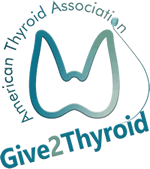ABBREVIATIONS & DEFINITIONS
Papillary thyroid cancer (PTC): the most common type of thyroid cancer. There are 4 variants of papillary thyroid cancer: classic, follicular, tall-cell and noninvasive follicular thyroid neoplasm with papillarylike nuclear features (NIFTP).
Follicular variant of papillary thyroid cancer (FVPTC): one of the subtypes of papillary thyroid carcinoma, which has been classified to two different forms with different prognostic: encapsulated or well-demarcated and invasive.
Noninvasive follicular thyroid neoplasm with papillarylike nuclear features (NIFTP): a new term has been used to describe a type of papillary thyroid cancer which is non-invasive. These cancers behave less aggressively than typical papillary thyroid cancer and have been shown to have low risk for recurrence and low risk for spread outside of the thyroid.
Follicular Adenoma (FA): benign (non-cancerous) tumor of the thyroid gland.
Molecular profile: genes and microRNAs that are expressed in benign or cancerous cells. Molecular markers can be used in thyroid specimens to either diagnose cancer or determine that the nodule is benign.
Mutation: A permanent change in one of the genes.
Genes: a molecular unit of heredity of a living organism. Living beings depend on genes, as they code for all proteins and RNA chains that have functions in a cell. Genes hold the information to build and maintain an organism’s cells and pass genetic traits to offspring.
Cancer-associated genes: these are genes that are normally expressed in cells. Cancer cells frequently have mutations in these genes. It is unclear whether mutations in these genes cause the cancer or are just associated with the cancer cells. The cancer-associated genes important in thyroid cancer are BRAF, RET/PTC, TERT and RAS.
Thyroid fine needle aspiration biopsy (FNA): a simple procedure that is done in the doctor’s office to determine if a thyroid nodule is benign (non-cancerous) or cancer. The doctor uses a very thin needle to withdraw cells from the thyroid nodule. Patients usually return home or to work after the biopsy without any ill effects.




